How to Stay Safe During a Civil Unrest?
In today's world, the unpredictability of civil unrest can leave many feeling anxious and vulnerable. It's crucial to understand how to navigate these turbulent times, ensuring not only your safety but also the safety of those around you. Civil unrest can emerge from various social, political, or economic issues, and being caught unprepared can lead to panic and confusion. This article aims to equip you with essential tips and strategies that will help you stay safe during such events. By being proactive, informed, and aware of your surroundings, you can significantly enhance your personal safety and readiness. So, let’s dive into the crucial steps you can take to protect yourself during civil unrest.
Civil unrest is often a reaction to perceived injustices or grievances within society. Whether it’s a protest, riot, or a spontaneous gathering, understanding the underlying causes can help you anticipate potential dangers. By recognizing the signs of unrest, you can prepare yourself mentally and physically, ensuring a proactive approach to safety. Think of it like preparing for a storm; you wouldn’t wait until the rain starts to gather your supplies, right? Similarly, being aware of the social climate around you allows you to act before a situation escalates.
Preparation is your first line of defense when it comes to civil unrest. Gathering supplies, creating emergency plans, and staying informed about local events are vital steps that can significantly enhance your safety. Imagine you’re going on a road trip; you wouldn’t just hop in the car without checking the map or filling up the gas tank. The same logic applies here. By preparing ahead of time, you can navigate through chaos with more confidence and ease.
One of the most important aspects of preparation is assembling an emergency kit. This kit should contain essential supplies to sustain you during unexpected situations. Consider including items such as:
- Non-perishable food: Energy bars, canned goods, and dried fruits are great options.
- Bottled water: Aim for at least one gallon per person per day.
- Flashlights and batteries: These can be lifesavers during power outages.
- Communication devices: A portable charger for your phone can keep you connected.
Having these items ready can make a crucial difference during times of unrest, providing you with the basic necessities to weather the storm.
When creating your emergency kit, it’s vital to ensure you have a variety of essential supplies. Non-perishable food and bottled water should be at the top of your list. Flashlights and extra batteries are also crucial, particularly if you find yourself in a situation where power is disrupted. Think of your emergency kit as your safety net; the more prepared you are, the more secure you will feel.
In addition to food and water, including first aid supplies in your emergency kit is essential for treating minor injuries. Bandages, antiseptics, and over-the-counter medications can help manage health issues during unrest. It's like having a mini hospital in your backpack; you never know when you might need it, but you'll be glad you have it when the time comes.
A well-thought-out emergency plan outlines safe routes, meeting points, and communication strategies. This plan ensures that you and your loved ones remain connected and safe during civil unrest. Think of it as your game plan; having a strategy in place will help you remain calm and collected when chaos erupts.
Staying updated on local news and social media can provide real-time information about unfolding events. This knowledge empowers individuals to make informed decisions regarding their safety. Being in the know is like having a map in an unfamiliar territory; it guides your decisions and keeps you on the right path.
Identifying trustworthy news outlets and social media accounts is crucial for receiving accurate information. Misinformation can lead to panic, so rely on verified sources for updates. Think of it as filtering through noise; you want to focus on the signals that matter most to your safety.
Many communities offer alert systems to inform residents about emergencies. Signing up for these notifications can provide timely updates and crucial safety information during civil unrest. It's like having a safety net that keeps you informed about what's happening in your area.
Being aware of your surroundings is key to staying safe during civil unrest. This includes recognizing potential threats and knowing when to act or seek shelter. Imagine walking through a crowded market; you wouldn’t want to be so engrossed in your phone that you miss the warning signs around you. Awareness fosters proactive decision-making and enhances personal safety.
Understanding the early indicators of civil unrest, such as large gatherings or escalating tensions, can help you avoid dangerous situations. It’s like having a sixth sense; the more attuned you are to your environment, the better equipped you’ll be to respond appropriately.
Identifying safe spaces, such as local shelters or trusted friends’ homes, provides options for refuge during unrest. Knowing where to go can alleviate panic and ensure safety. It’s comforting to have a plan, like knowing there’s a safe harbor you can reach when the storm hits.
Maintaining open lines of communication with family and friends is essential during civil unrest. This ensures everyone is informed and can coordinate safety measures effectively. Just as a well-tuned orchestra plays harmoniously, effective communication creates a symphony of safety and preparedness.
Setting up regular check-in times with loved ones can provide peace of mind. This practice helps ensure that everyone remains safe and connected during chaotic situations. Think of it as a lifeline; knowing that someone is looking out for you makes all the difference.
Utilizing mobile apps and messaging platforms can facilitate communication during unrest. However, be cautious about sharing sensitive information that could compromise safety. It’s like navigating a maze; you want to take the safest path without revealing too much to the outside world.
1. What should I include in my emergency kit?
Your emergency kit should contain non-perishable food, bottled water, flashlights, batteries, a first aid kit, and communication devices.
2. How can I stay informed during civil unrest?
Follow reliable news sources, local authorities, and community alert systems to receive accurate updates.
3. What are some warning signs of civil unrest?
Large gatherings, escalating tensions, and increased police presence are common indicators of potential unrest.
4. How can I maintain communication with my loved ones?
Establish check-in protocols and use mobile apps to stay connected, ensuring everyone is safe and informed.
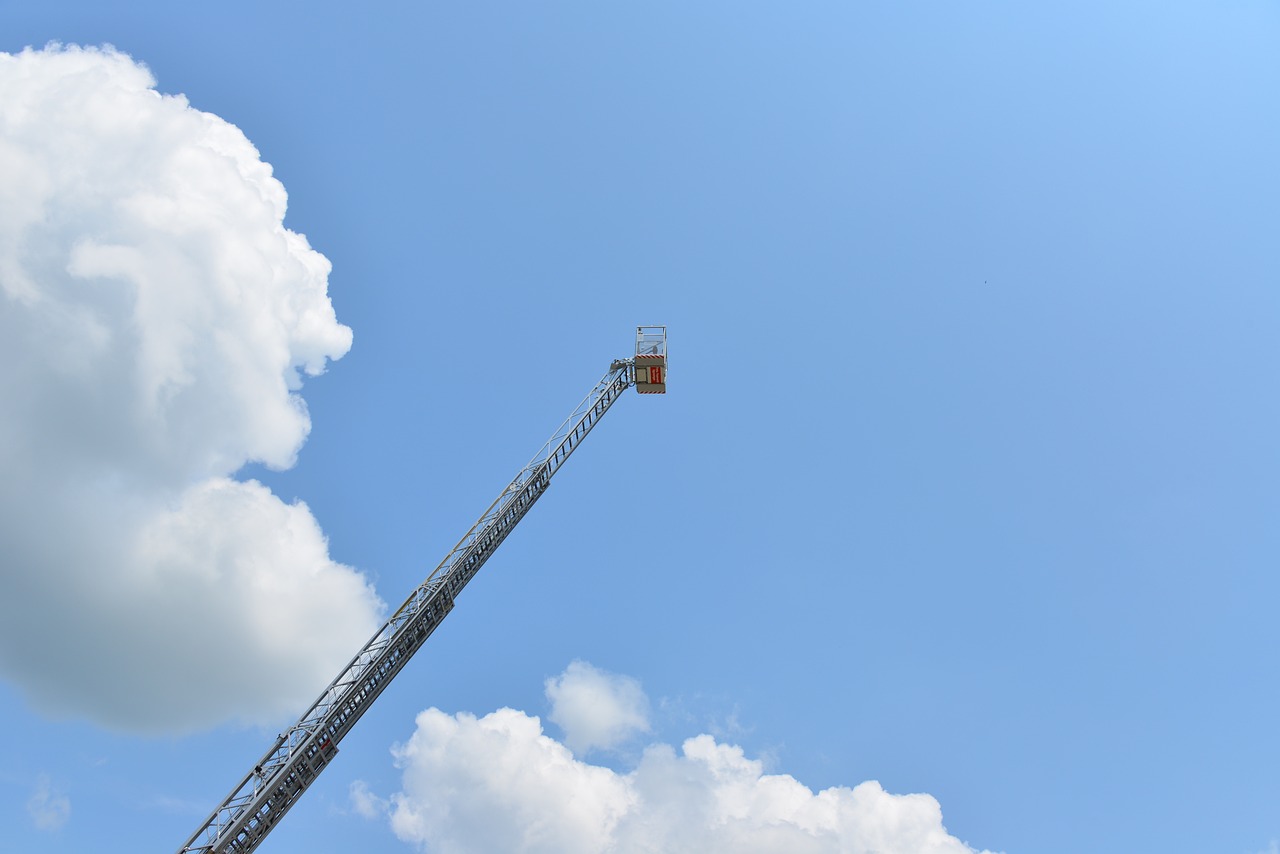
Understanding Civil Unrest
Civil unrest is a phenomenon that can erupt from a multitude of social, political, or economic grievances. It manifests in various forms, such as protests, demonstrations, or even riots, and often reflects the collective frustrations of a community or society. To truly grasp the essence of civil unrest, one must delve into its underlying causes. These can range from systemic inequality, government oppression, and economic hardships to cultural tensions and social injustices. Understanding these factors not only helps individuals anticipate potential dangers but also equips them with the knowledge to approach such situations proactively.
For instance, when people feel unheard or marginalized, they may resort to civil unrest as a means of expression and demand for change. This can lead to a volatile environment where emotions run high, and actions can quickly escalate. Recognizing these triggers is crucial for anyone looking to navigate through or around civil unrest safely. By staying informed about the issues at play, individuals can better prepare themselves for the unpredictable nature of such events.
Moreover, civil unrest can often be fueled by misinformation or a lack of communication. In today’s digital age, social media plays a significant role in shaping public perception and mobilizing action. However, it can also lead to the spread of false narratives, which can exacerbate tensions and lead to chaotic situations. Therefore, understanding the dynamics of civil unrest involves not only recognizing its causes but also being aware of how information is disseminated and perceived in society.
In conclusion, the key to navigating civil unrest lies in understanding its roots and the context in which it occurs. By doing so, individuals can better anticipate potential threats and take proactive steps to ensure their safety. Remember, knowledge is power, and in times of uncertainty, staying informed can make all the difference.

Preparation Before Unrest
When it comes to civil unrest, being prepared can make all the difference between safety and chaos. Think of it like preparing for a storm; you wouldn’t wait until the clouds roll in to gather your supplies. Instead, you’d want to have everything ready to go well in advance. This proactive approach not only enhances your personal safety but also gives you peace of mind knowing that you and your loved ones are equipped to handle any situation that may arise.
One of the first steps in your preparation is to gather essential supplies. An emergency kit is a must-have, and it should include a variety of items that can sustain you during unexpected situations. Imagine being stuck at home for days due to unrest; having a well-stocked emergency kit can be a lifesaver. Your kit should ideally contain:
- Non-perishable food: Items like canned goods, granola bars, and dried fruits can provide necessary nutrition without needing refrigeration.
- Bottled water: Aim for at least one gallon per person per day for at least three days, as staying hydrated is crucial.
- Flashlights and batteries: Power outages can happen during unrest, so having a reliable light source is essential.
Next, don’t forget about first aid items. Accidents can happen, and knowing you have the ability to treat minor injuries can alleviate a lot of stress. Your first aid kit should include:
- Bandages of various sizes
- Antiseptics to clean wounds
- Over-the-counter medications like pain relievers and antihistamines
Having these supplies ready can make a crucial difference during times of unrest, allowing you to focus on staying safe rather than scrambling for resources.
Another vital aspect of preparation is creating an emergency plan. This plan should outline safe routes to take, designated meeting points for your family, and strategies for communication. Imagine the chaos that could ensue if you and your loved ones were separated during a crisis; having a clear plan can prevent panic and confusion. Make sure everyone in your household is aware of the plan and practices it, just like a fire drill. This way, when the time comes, everyone knows exactly what to do.
In summary, preparation is your best defense against the unpredictability of civil unrest. By gathering essential supplies, including first aid items, and creating a comprehensive emergency plan, you’re setting yourself up for success. Remember, it’s better to be over-prepared than underprepared. Take the time now to ensure your safety and the safety of your loved ones; it’s an investment that you won’t regret.
What should I include in my emergency kit?
Your emergency kit should contain non-perishable food, bottled water, a flashlight, batteries, first aid supplies, and any necessary medications.
How can I stay informed during civil unrest?
Stay updated by following reliable news outlets and social media channels. Consider signing up for community alert systems for real-time updates.
What is the best way to create an emergency plan?
Your emergency plan should include safe routes, meeting points, and communication strategies. Make sure everyone in your household is familiar with the plan.
How can I ensure my family stays connected during unrest?
Establish regular check-in times and use mobile apps for communication. It’s important to have a strategy in place for staying connected.

Emergency Kits
This article provides essential tips and strategies for ensuring personal safety during times of civil unrest, including preparation, situational awareness, and effective communication.
Civil unrest can arise from various social, political, or economic issues. Understanding its causes helps individuals anticipate potential dangers and prepare accordingly, ensuring a proactive approach to safety.
Preparing for potential civil unrest involves gathering supplies, creating emergency plans, and staying informed about local events. This proactive approach can significantly enhance personal safety and readiness.
An emergency kit is your lifeline during unexpected situations, especially during civil unrest. Imagine being caught in a chaotic scene without the essentials to keep you safe and healthy. That’s where an emergency kit comes into play. It should be packed with essential supplies that can sustain you and your loved ones during turbulent times. Think of it as your personal safety net, ready to spring into action when needed.
When assembling your emergency kit, consider including the following essential supplies:
- Non-perishable food: Foods that don’t spoil easily, such as canned goods, dried fruits, and energy bars, can keep you nourished when access to food is limited.
- Bottled water: Staying hydrated is crucial, so having enough water for at least three days is essential.
- Flashlights and batteries: Power outages can occur during unrest, making flashlights vital for visibility and safety.
- First aid items: A well-stocked first aid kit can help treat minor injuries and manage health issues.
Having these items ready can make a crucial difference during unexpected situations. You never know when you might need to grab your kit and head to safety, so keep it in a readily accessible location.
It's vital to include non-perishable food, bottled water, flashlights, and batteries in your emergency kit. These items can sustain you in case of extended unrest or disruption. Additionally, think about including items like a multi-tool, personal hygiene products, and a blanket. These may seem small, but they can provide comfort and functionality when you need it most.
Including first aid supplies in your emergency kit is essential for treating minor injuries. Bandages, antiseptics, and over-the-counter medications can help manage health issues during unrest. Imagine a scenario where you or a loved one gets injured and help is delayed; having the right supplies can mean the difference between a minor inconvenience and a major health crisis.
A well-thought-out emergency plan outlines safe routes, meeting points, and communication strategies. This plan ensures that you and your loved ones remain connected and safe during civil unrest.
Staying updated on local news and social media can provide real-time information about unfolding events. This knowledge empowers individuals to make informed decisions regarding their safety.
Identifying trustworthy news outlets and social media accounts is crucial for receiving accurate information. Misinformation can lead to panic, so rely on verified sources for updates.
Many communities offer alert systems to inform residents about emergencies. Signing up for these notifications can provide timely updates and crucial safety information during civil unrest.
Being aware of your surroundings is key to staying safe during civil unrest. This includes recognizing potential threats and knowing when to act or seek shelter.
Understanding the early indicators of civil unrest, such as large gatherings or escalating tensions, can help you avoid dangerous situations. Awareness fosters proactive decision-making and enhances personal safety.
Identifying safe spaces, such as local shelters or trusted friends’ homes, provides options for refuge during unrest. Knowing where to go can alleviate panic and ensure safety.
Maintaining open lines of communication with family and friends is essential during civil unrest. This ensures everyone is informed and can coordinate safety measures effectively.
Setting up regular check-in times with loved ones can provide peace of mind. This practice helps ensure that everyone remains safe and connected during chaotic situations.
Utilizing mobile apps and messaging platforms can facilitate communication during unrest. However, be cautious about sharing sensitive information that could compromise safety.
1. What should I include in my emergency kit?
Your emergency kit should include non-perishable food, bottled water, flashlights, batteries, first aid items, and personal hygiene products.
2. How can I stay informed during civil unrest?
Stay updated by following reliable news sources, subscribing to community alert systems, and monitoring social media for real-time information.
3. What are safe spaces during civil unrest?
Safe spaces can include local shelters, trusted friends’ homes, or any area that is away from the unrest and deemed secure.
4. Why is situational awareness important?
Being aware of your surroundings helps you recognize potential threats and make informed decisions to protect yourself and your loved ones.
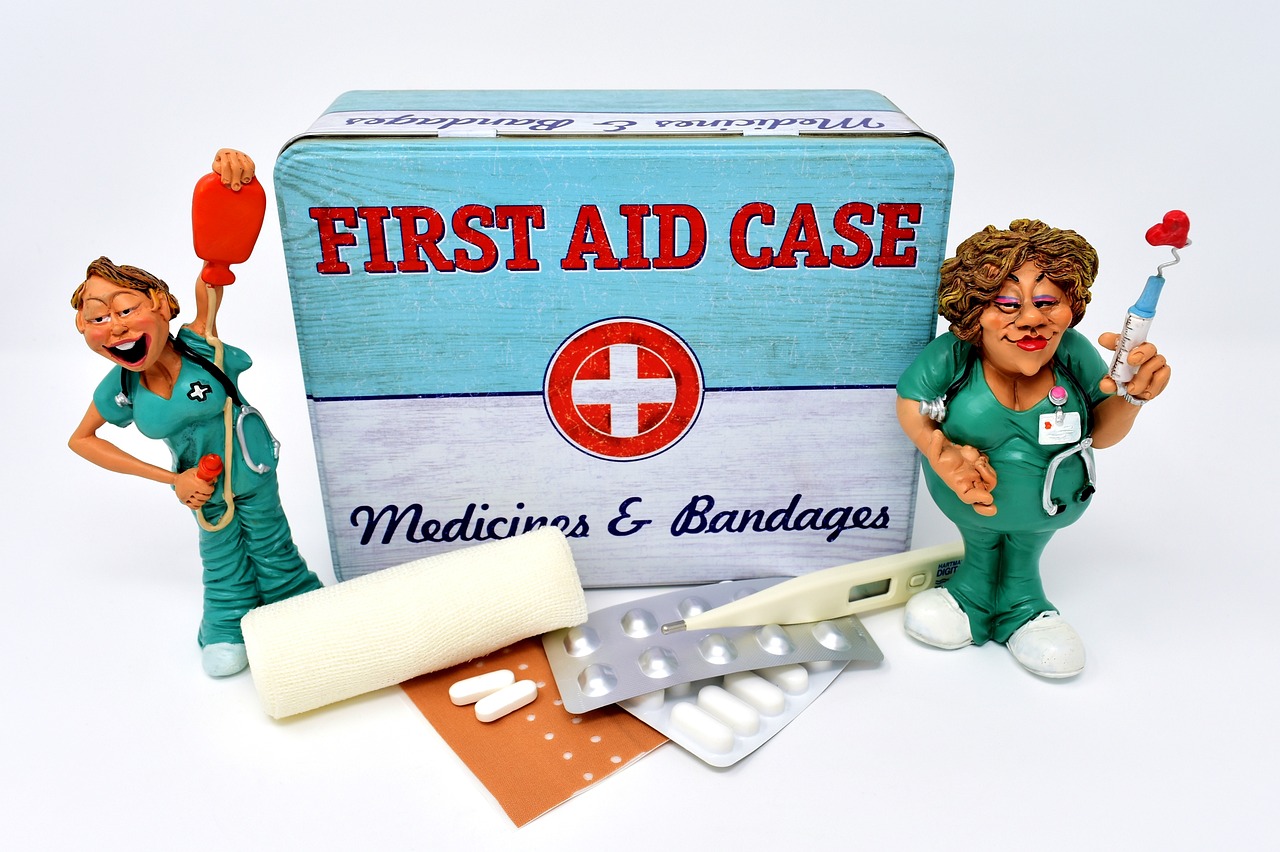
Essential Supplies
This article provides essential tips and strategies for ensuring personal safety during times of civil unrest, including preparation, situational awareness, and effective communication.
Civil unrest can arise from various social, political, or economic issues. Understanding its causes helps individuals anticipate potential dangers and prepare accordingly, ensuring a proactive approach to safety.
Preparing for potential civil unrest involves gathering supplies, creating emergency plans, and staying informed about local events. This proactive approach can significantly enhance personal safety and readiness.
An emergency kit should contain essential supplies such as food, water, first aid items, and communication devices. Having these ready can make a crucial difference during unexpected situations.
When it comes to assembling your emergency kit, focusing on can make all the difference in ensuring your safety and comfort during civil unrest. It's not just about having items on hand; it's about having the right items that can sustain you through challenging times. At the very least, your kit should include:
- Non-perishable Food: Stock up on items like canned goods, granola bars, and dried fruits. These foods are not only easy to store but also provide the necessary energy you might need.
- Bottled Water: Hydration is crucial. Aim for at least one gallon of water per person per day, and don't forget to account for your pets!
- Flashlights and Batteries: Power outages can occur during unrest. Having a reliable flashlight and extra batteries can help you navigate safely in the dark.
- First Aid Supplies: A well-stocked first aid kit is invaluable. Include band-aids, antiseptics, and any personal medications. You never know when you might need to treat a minor injury.
Additionally, consider including items such as a multi-tool, blankets, and a whistle. These can serve multiple purposes and can be crucial in various situations. Remember, the goal is to be prepared for the unexpected, and having a well-thought-out emergency kit can provide you with peace of mind.
A well-thought-out emergency plan outlines safe routes, meeting points, and communication strategies. This plan ensures that you and your loved ones remain connected and safe during civil unrest.
Staying updated on local news and social media can provide real-time information about unfolding events. This knowledge empowers individuals to make informed decisions regarding their safety.
Identifying trustworthy news outlets and social media accounts is crucial for receiving accurate information. Misinformation can lead to panic, so rely on verified sources for updates.
Many communities offer alert systems to inform residents about emergencies. Signing up for these notifications can provide timely updates and crucial safety information during civil unrest.
Being aware of your surroundings is key to staying safe during civil unrest. This includes recognizing potential threats and knowing when to act or seek shelter.
Understanding the early indicators of civil unrest, such as large gatherings or escalating tensions, can help you avoid dangerous situations. Awareness fosters proactive decision-making and enhances personal safety.
Identifying safe spaces, such as local shelters or trusted friends’ homes, provides options for refuge during unrest. Knowing where to go can alleviate panic and ensure safety.
Maintaining open lines of communication with family and friends is essential during civil unrest. This ensures everyone is informed and can coordinate safety measures effectively.
Setting up regular check-in times with loved ones can provide peace of mind. This practice helps ensure that everyone remains safe and connected during chaotic situations.
Utilizing mobile apps and messaging platforms can facilitate communication during unrest. However, be cautious about sharing sensitive information that could compromise safety.
Q: What should I include in my emergency kit?
A: Your emergency kit should include non-perishable food, bottled water, first aid supplies, flashlights, batteries, and any personal medications.
Q: How can I stay informed during civil unrest?
A: Stay updated by following reliable news sources and community alert systems. Social media can also provide real-time information, but be cautious of misinformation.
Q: What are safe spaces during civil unrest?
A: Safe spaces can include local shelters, trusted friends’ homes, or any place where you feel secure and away from potential danger.
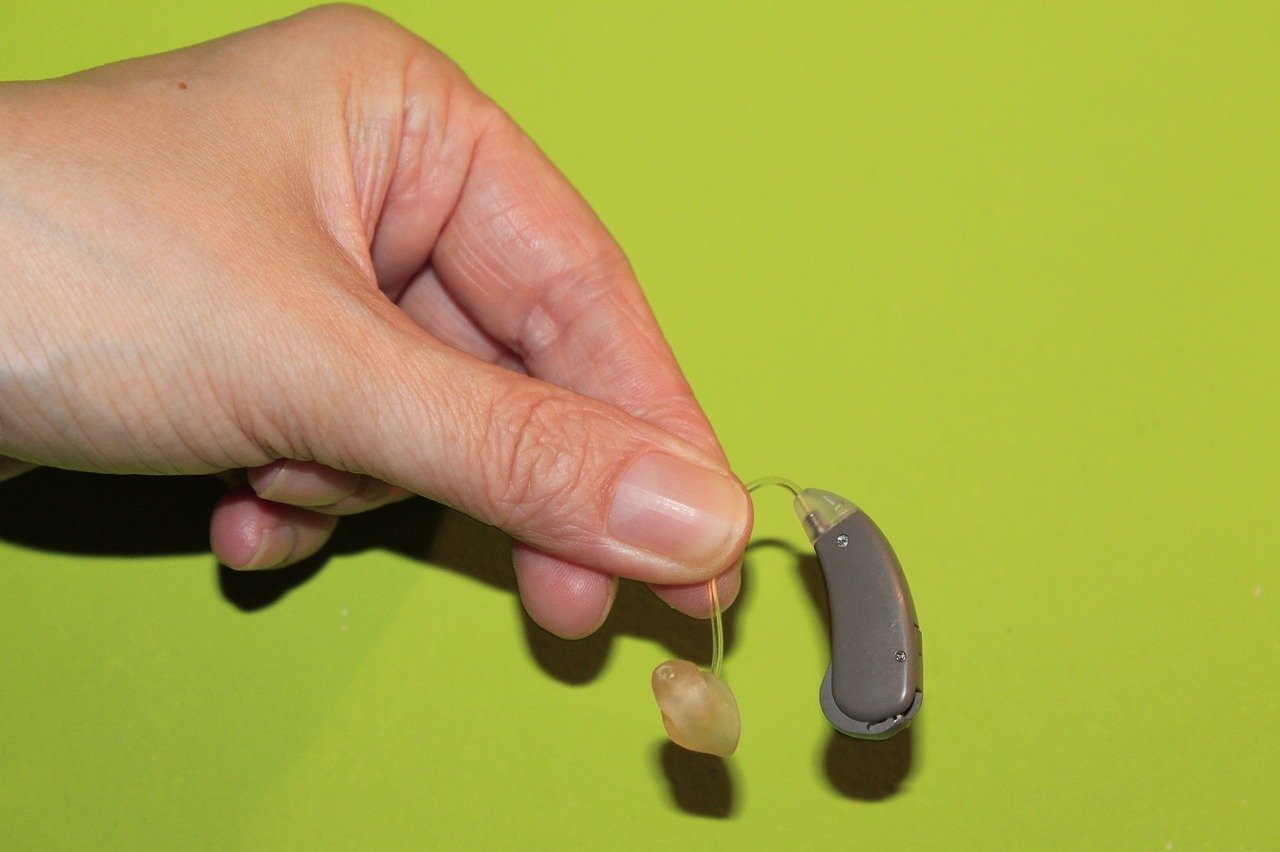
First Aid Items
This article provides essential tips and strategies for ensuring personal safety during times of civil unrest, including preparation, situational awareness, and effective communication.
Civil unrest can arise from various social, political, or economic issues. Understanding its causes helps individuals anticipate potential dangers and prepare accordingly, ensuring a proactive approach to safety.
Preparing for potential civil unrest involves gathering supplies, creating emergency plans, and staying informed about local events. This proactive approach can significantly enhance personal safety and readiness.
An emergency kit should contain essential supplies such as food, water, first aid items, and communication devices. Having these ready can make a crucial difference during unexpected situations.
It's vital to include non-perishable food, bottled water, flashlights, and batteries in your emergency kit. These items can sustain you in case of extended unrest or disruption.
Including first aid supplies in your emergency kit is essential for treating minor injuries, which can occur unexpectedly during civil unrest. A well-stocked first aid kit can be your best friend in times of need, serving as a lifeline when every second counts. Here are some key items you should consider:
- Adhesive Bandages: These are crucial for covering small cuts and abrasions. They come in various sizes and can help prevent infection.
- Antiseptic Wipes: Keeping wounds clean is vital. Antiseptic wipes can help disinfect cuts and scrapes, reducing the risk of infection.
- Gauze Pads and Tape: For larger injuries, having sterile gauze pads and medical tape is important to control bleeding and protect the wound.
- Over-the-Counter Medications: Pain relievers such as ibuprofen or acetaminophen can alleviate discomfort from injuries or stress-related symptoms.
- Elastic Bandages: These are useful for wrapping sprains or strains, providing support and reducing swelling.
Additionally, consider including a first aid manual or guide in your kit. This resource can be invaluable for those who may not have extensive medical training. Remember, being prepared with these first aid items not only helps you manage injuries effectively but also instills a sense of confidence in your ability to handle emergencies.
A well-thought-out emergency plan outlines safe routes, meeting points, and communication strategies. This plan ensures that you and your loved ones remain connected and safe during civil unrest.
Staying updated on local news and social media can provide real-time information about unfolding events. This knowledge empowers individuals to make informed decisions regarding their safety.
Identifying trustworthy news outlets and social media accounts is crucial for receiving accurate information. Misinformation can lead to panic, so rely on verified sources for updates.
Many communities offer alert systems to inform residents about emergencies. Signing up for these notifications can provide timely updates and crucial safety information during civil unrest.
Being aware of your surroundings is key to staying safe during civil unrest. This includes recognizing potential threats and knowing when to act or seek shelter.
Understanding the early indicators of civil unrest, such as large gatherings or escalating tensions, can help you avoid dangerous situations. Awareness fosters proactive decision-making and enhances personal safety.
Identifying safe spaces, such as local shelters or trusted friends’ homes, provides options for refuge during unrest. Knowing where to go can alleviate panic and ensure safety.
Maintaining open lines of communication with family and friends is essential during civil unrest. This ensures everyone is informed and can coordinate safety measures effectively.
Setting up regular check-in times with loved ones can provide peace of mind. This practice helps ensure that everyone remains safe and connected during chaotic situations.
Utilizing mobile apps and messaging platforms can facilitate communication during unrest. However, be cautious about sharing sensitive information that could compromise safety.
Q1: What should I include in my emergency kit?
A1: Your emergency kit should include non-perishable food, bottled water, first aid supplies, flashlights, batteries, and any necessary medications.
Q2: How can I stay informed during civil unrest?
A2: Follow reliable news sources and local community alerts on social media for real-time updates about the situation around you.
Q3: What are safe spaces during civil unrest?
A3: Safe spaces can be designated shelters, trusted friends’ homes, or any location that is secure and away from potential danger.
Q4: How often should I check in with my family during unrest?
A4: It's advisable to establish a regular check-in schedule, such as every few hours, to ensure everyone is safe and accounted for.
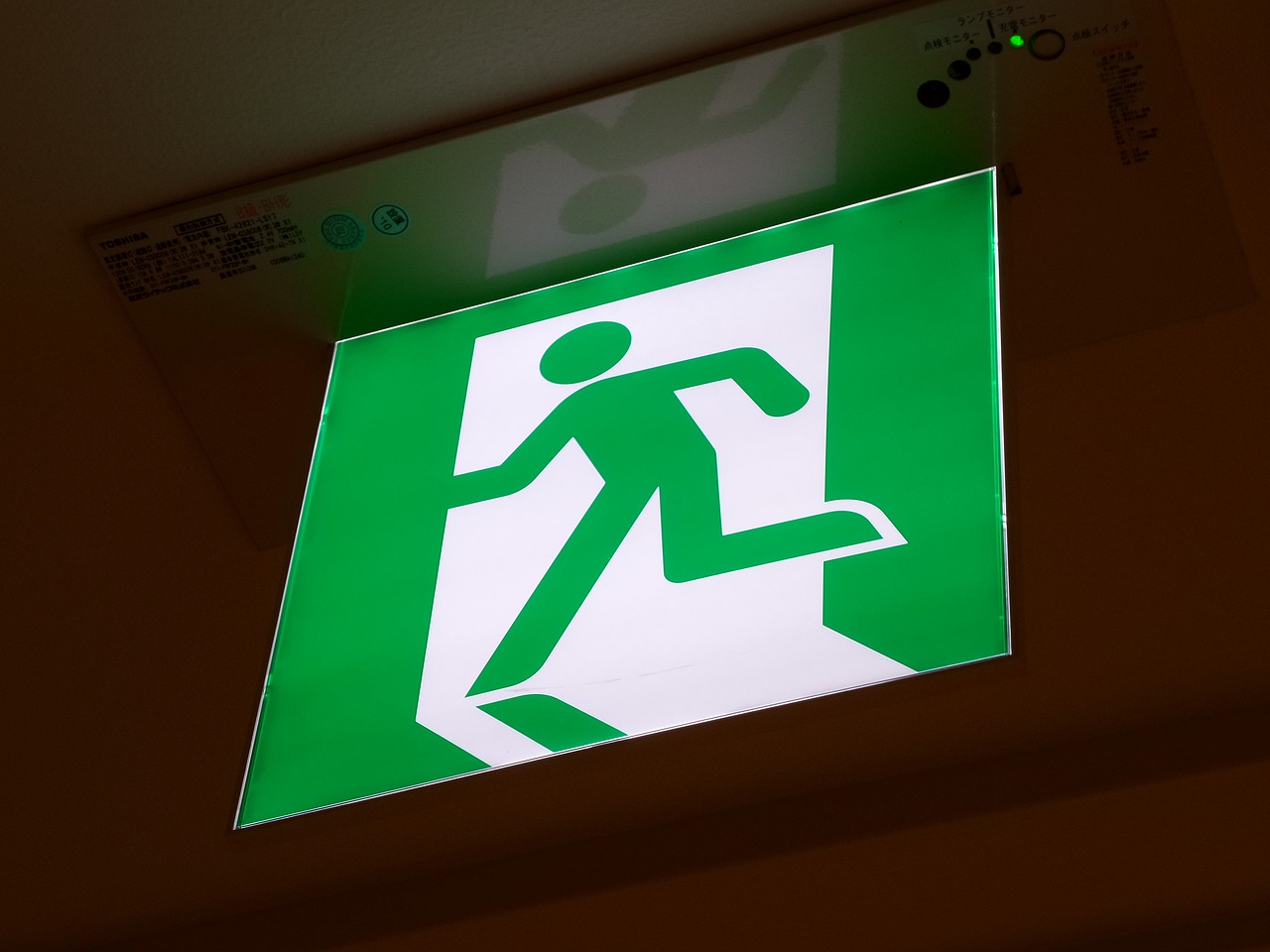
Creating an Emergency Plan
Creating an emergency plan is like crafting a safety net that you can rely on during unpredictable times. It’s not just about having a list of things to do; it’s about ensuring that you and your loved ones have a clear understanding of what to do when chaos erupts. Imagine being in a crowded area when tensions rise—having a plan in place can help you act swiftly and decisively, rather than being caught off guard.
Your emergency plan should encompass several key elements to ensure that everyone is on the same page. First, consider establishing safe routes for evacuation. These routes should be familiar to all family members and should avoid areas that are likely to be hotspots during unrest. It’s also crucial to identify meeting points where everyone can regroup if you get separated. This could be a local park, a friend’s house, or any location that is safe and accessible.
Next, communication is vital during emergencies. Make sure to have a strategy for how you will stay in touch. This could involve designating a family member as the primary point of contact, someone who lives outside the immediate area and can help coordinate your efforts. You might also want to establish check-in times, which can be particularly helpful if you’re in different locations when unrest occurs.
Additionally, consider creating a communication tree. This is a simple structure where each family member has a list of contacts they need to reach out to. For instance, if something happens, you can quickly inform your immediate circle, and they can pass the information along. Here’s a simple example:
| Family Member | Contact Number | Check-in Status |
|---|---|---|
| Mom | (555) 123-4567 | Checked In |
| Dad | (555) 234-5678 | Checked In |
| Sister | (555) 345-6789 | Checked In |
Lastly, practice your emergency plan. It may sound silly, but running through the steps with your family can help everyone feel more confident and prepared. Just like a fire drill, knowing what to do in advance can save precious time and reduce panic when it matters most. Remember, the goal is to ensure that everyone feels safe and knows how to react when faced with uncertainty.
- What should I include in my emergency plan? Your emergency plan should include safe routes, meeting points, communication strategies, and a list of emergency contacts.
- How often should I update my emergency plan? It's advisable to review and update your emergency plan at least once a year or whenever there are significant changes in your family or community.
- What if I have pets? Be sure to include your pets in your emergency plan. Identify pet-friendly shelters and ensure you have supplies for them as well.
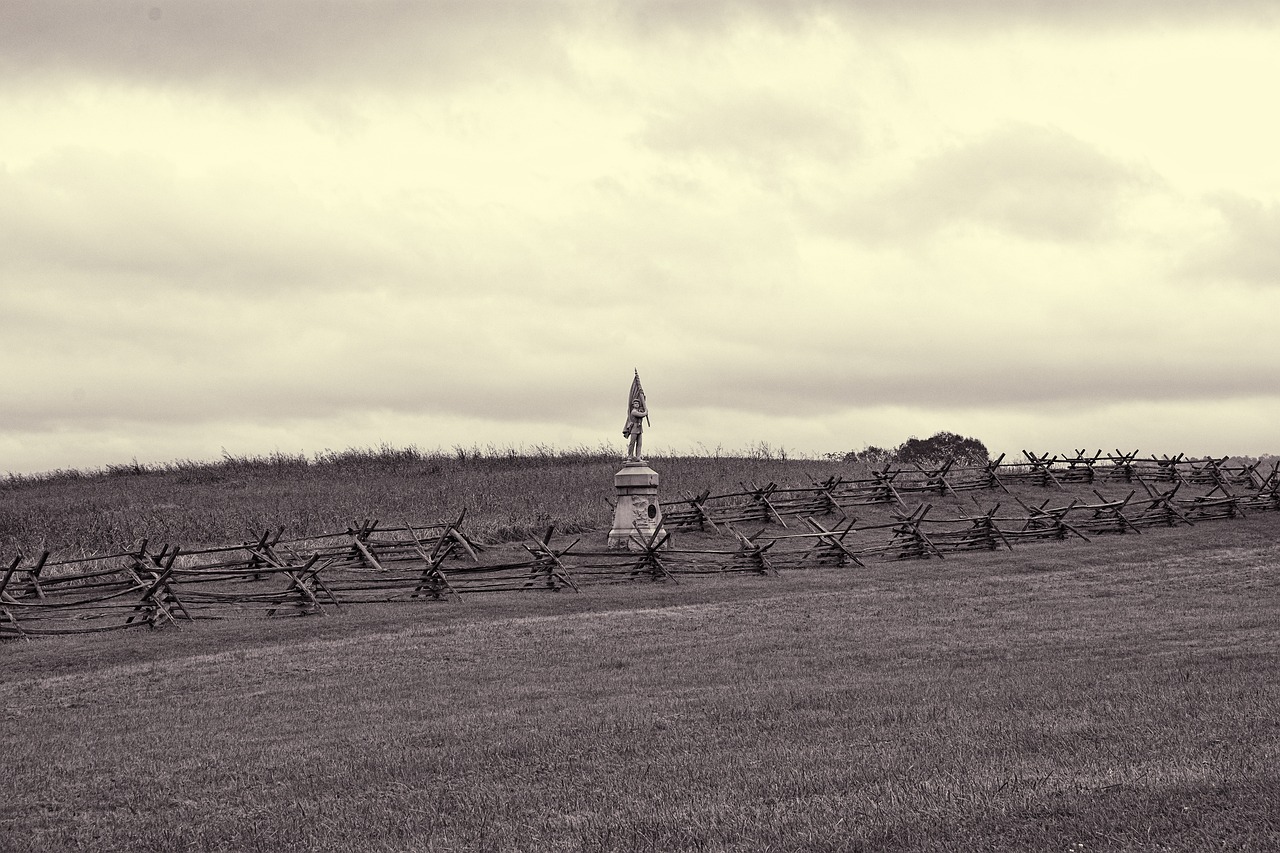
Staying Informed
In times of civil unrest, staying informed is not just a luxury; it's a necessity. Imagine being caught in a storm without knowing which way the winds are blowing. That’s what it feels like when you’re unaware of the unfolding events around you. The world can change in an instant, and having access to real-time information can be your lifeline. This means keeping your ear to the ground and being proactive about where you get your news. But how do you navigate the overwhelming sea of information out there?
First and foremost, it’s essential to identify reliable sources. In the age of social media, misinformation spreads like wildfire, often leading to unnecessary panic. So, who do you trust? Stick to established news outlets known for their credibility and fact-checking. For instance, local news stations often provide real-time updates on events happening in your area, which can be a game-changer when unrest occurs. Additionally, consider following verified social media accounts that focus on local news and emergency updates. This way, you can sift through the noise and focus on what truly matters.
Moreover, many communities now offer alert systems that send notifications about emergencies directly to your phone. These alerts can provide vital information, such as curfews, safe zones, or even evacuation routes. Signing up for these notifications ensures you're always in the loop, allowing you to make informed decisions swiftly. Think of it as having a personal safety net that keeps you connected to your community's pulse.
In addition to traditional media and community alerts, consider utilizing apps designed for emergency situations. Some apps provide real-time alerts and maps that highlight safe areas and current threats. However, it’s important to use technology wisely. Be cautious about sharing sensitive information on public platforms, as this could compromise your safety and that of your loved ones. Always remember that while technology can be a powerful ally, it can also be a double-edged sword.
Ultimately, staying informed during civil unrest is about being proactive rather than reactive. Knowledge is power, and in uncertain times, it can be your greatest asset. By relying on credible sources, signing up for community alerts, and using technology wisely, you can navigate through the chaos with confidence and clarity.
1. What should I do if I encounter misinformation online?
Always verify information through multiple reliable sources. If something seems questionable, take a step back and do your research before sharing or acting on it.
2. How can I find local news updates during a civil unrest situation?
Tune into local radio stations, follow local news websites on social media, and consider downloading news apps that provide real-time updates.
3. Are community alert systems effective?
Yes, they can be incredibly effective as they provide timely and relevant information directly from local authorities, helping you stay informed about emergencies.
4. What are some reliable news sources I can follow?
Look for established news organizations with a history of credibility, such as BBC, NPR, or your local news channels. Always check for verified accounts on social media.

Utilizing Reliable Sources
This article provides essential tips and strategies for ensuring personal safety during times of civil unrest, including preparation, situational awareness, and effective communication.
Civil unrest can arise from various social, political, or economic issues. Understanding its causes helps individuals anticipate potential dangers and prepare accordingly, ensuring a proactive approach to safety.
Preparing for potential civil unrest involves gathering supplies, creating emergency plans, and staying informed about local events. This proactive approach can significantly enhance personal safety and readiness.
An emergency kit should contain essential supplies such as food, water, first aid items, and communication devices. Having these ready can make a crucial difference during unexpected situations.
It's vital to include non-perishable food, bottled water, flashlights, and batteries in your emergency kit. These items can sustain you in case of extended unrest or disruption.
Including first aid supplies in your emergency kit is essential for treating minor injuries. Bandages, antiseptics, and over-the-counter medications can help manage health issues during unrest.
A well-thought-out emergency plan outlines safe routes, meeting points, and communication strategies. This plan ensures that you and your loved ones remain connected and safe during civil unrest.
Staying updated on local news and social media can provide real-time information about unfolding events. This knowledge empowers individuals to make informed decisions regarding their safety.
In times of civil unrest, the importance of reliable information cannot be overstated. Misinformation can spread like wildfire, causing unnecessary panic and confusion. Therefore, it is crucial to identify trustworthy news outlets and social media accounts that provide accurate updates. When looking for reliable sources, consider the following:
- Established News Organizations: Reputable news organizations have rigorous fact-checking processes and journalistic standards.
- Official Government Channels: Local government websites and social media pages often provide the most accurate and timely information regarding safety protocols and emergency measures.
- Community Alerts: Many localities have alert systems that send notifications about emergencies, which can help you stay informed.
By relying on these sources, you can significantly reduce the risk of acting on false information. Always verify the information you receive by cross-referencing it with multiple outlets. For example, if a significant event is reported by one news source, check to see if others are also covering the same story before reacting. This habit can save you from making hasty decisions that could jeopardize your safety.
Being aware of your surroundings is key to staying safe during civil unrest. This includes recognizing potential threats and knowing when to act or seek shelter.
Understanding the early indicators of civil unrest, such as large gatherings or escalating tensions, can help you avoid dangerous situations. Awareness fosters proactive decision-making and enhances personal safety.
Identifying safe spaces, such as local shelters or trusted friends’ homes, provides options for refuge during unrest. Knowing where to go can alleviate panic and ensure safety.
Maintaining open lines of communication with family and friends is essential during civil unrest. This ensures everyone is informed and can coordinate safety measures effectively.
Setting up regular check-in times with loved ones can provide peace of mind. This practice helps ensure that everyone remains safe and connected during chaotic situations.
Utilizing mobile apps and messaging platforms can facilitate communication during unrest. However, be cautious about sharing sensitive information that could compromise safety.
Q: What should I do if I find myself in an area of civil unrest?
A: Stay calm, assess your surroundings, and try to leave the area safely. Avoid confrontation and seek shelter if necessary.
Q: How can I prepare my family for potential civil unrest?
A: Discuss emergency plans, create communication protocols, and ensure everyone knows safe routes and meeting points.
Q: What are some reliable sources of information during civil unrest?
A: Trustworthy news organizations, official government channels, and community alert systems are your best bets for accurate information.
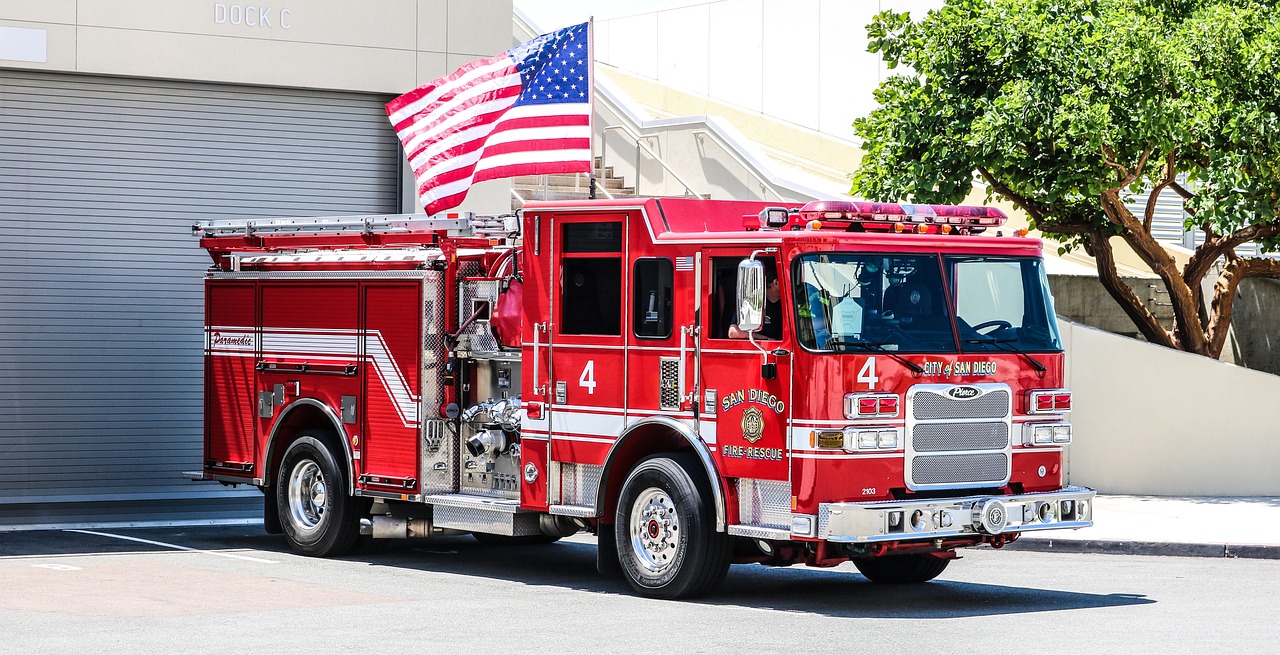
Community Alerts
Staying informed during times of civil unrest is not just a luxury; it's a necessity. One of the most effective ways to keep yourself updated is by signing up for community alert systems. These systems are designed to provide residents with real-time information about emergencies, including civil unrest, natural disasters, and other critical situations that could affect your safety. Imagine receiving a text message or an email that alerts you to a developing situation just moments after it begins. This kind of timely information can be the difference between staying safe and being caught off guard.
Community alert systems usually gather data from local authorities and news sources, ensuring that the information you receive is both accurate and relevant. These notifications can cover a range of topics, such as:
- Evacuations or curfews in your area
- Road closures or public transport disruptions
- Safety tips and resources
By signing up for these alerts, you empower yourself to make informed decisions quickly. Many communities offer these services for free, and the process to register is typically straightforward. You might need to provide your name, address, and preferred contact method—be it SMS, email, or even voice calls.
Once you're enrolled, it's wise to customize your alert preferences. For instance, you might want to receive notifications only for certain types of emergencies or during specific hours. This ensures that you stay informed without feeling overwhelmed by constant updates. It's also a good idea to encourage friends and family members to sign up as well. After all, safety is a shared responsibility, and the more people who are informed, the better prepared your community will be.
Furthermore, local governments and community organizations often use social media platforms to disseminate urgent information. Following official accounts on platforms like Twitter, Facebook, or Instagram can supplement the alerts you receive and provide additional context to unfolding events. Just remember to verify the information you come across, as misinformation can spread rapidly during times of unrest.
In conclusion, community alert systems are an invaluable resource for anyone looking to enhance their safety during civil unrest. By being proactive and staying connected, you can navigate these challenging times with greater confidence and awareness. So, take that step today—sign up for your local alerts and encourage those around you to do the same. Your safety is worth it!
-
What types of alerts can I expect from community alert systems?
You can expect a variety of alerts, including emergency notifications, weather warnings, and updates on local incidents. These alerts aim to keep you informed about any situation that could impact your safety.
-
How do I sign up for community alerts?
Typically, you can sign up through your local government's website or community organization. You will need to provide some basic information, such as your contact details and preferences for receiving alerts.
-
Are community alerts free?
Yes, most community alert systems are free to join. They are funded by local governments or community organizations to help keep residents safe.
-
How can I ensure I receive accurate information?
To ensure you receive accurate information, sign up for alerts from official sources, such as local government websites or verified news outlets. Avoid relying on unverified social media posts, as misinformation can spread quickly.

Situational Awareness
Staying safe during civil unrest requires more than just preparation; it demands . This means being fully conscious of your environment and the dynamics at play around you. Imagine walking through a bustling market, where the atmosphere can shift from calm to chaotic in a matter of moments. Recognizing the early signs of unrest can be the difference between safety and danger. So, what should you be looking for?
First, pay attention to the people around you. Are they acting unusually? Large groups gathering can be a sign of potential unrest. If you notice escalating tensions, such as shouting or aggressive behavior, it's time to evaluate your surroundings and consider your next steps. Understanding these warning signs can help you navigate through potentially volatile situations safely.
Moreover, knowing the geography of your area is essential. Familiarize yourself with the locations of safe spaces—places where you can seek refuge if things go awry. This could be a local community center, a friend's house, or even a nearby police station. Having these locations in mind can alleviate panic and provide a clear direction when chaos unfolds.
Another critical aspect of situational awareness is being attuned to the atmosphere around you. Is there a sense of unease in the air? Are people looking anxious or fearful? These subtle cues can provide vital information about the potential for unrest. In such scenarios, consider the following:
- Monitor local news and social media for updates.
- Stay alert for changes in crowd behavior.
- Trust your instincts—if something feels off, it probably is.
In addition to physical awareness, mental preparedness is equally important. Cultivating a mindset that is ready to act swiftly can be your best ally. Think of it as training for a marathon; the more you practice, the better equipped you are to handle the unexpected. Visualize potential scenarios and your responses to them—this mental rehearsal can enhance your ability to react calmly and effectively in real-life situations.
Finally, remember that communication plays a crucial role in situational awareness. Keep your phone charged and have a plan for how you will communicate with loved ones during an emergency. Establishing check-in protocols can help ensure everyone stays connected and informed, reducing the chaos that often accompanies unrest.
Q: What should I do if I find myself in a dangerous situation?
A: Stay calm, assess your surroundings, and look for the safest exit. If possible, move away from the source of danger and seek a secure location.
Q: How can I stay informed during civil unrest?
A: Utilize reliable news sources and community alert systems. Social media can also be a quick way to receive updates, but ensure that the information is verified.
Q: What are safe spaces during civil unrest?
A: Safe spaces can include community centers, designated shelters, or the homes of trusted friends or family members. Familiarize yourself with these locations beforehand.
Q: How can I improve my situational awareness?
A: Practice being observant in everyday situations. Pay attention to your surroundings, recognize patterns, and mentally prepare for various scenarios.

Recognizing Warning Signs
This article provides essential tips and strategies for ensuring personal safety during times of civil unrest, including preparation, situational awareness, and effective communication.
Civil unrest can arise from various social, political, or economic issues. Understanding its causes helps individuals anticipate potential dangers and prepare accordingly, ensuring a proactive approach to safety.
Preparing for potential civil unrest involves gathering supplies, creating emergency plans, and staying informed about local events. This proactive approach can significantly enhance personal safety and readiness.
An emergency kit should contain essential supplies such as food, water, first aid items, and communication devices. Having these ready can make a crucial difference during unexpected situations.
It's vital to include non-perishable food, bottled water, flashlights, and batteries in your emergency kit. These items can sustain you in case of extended unrest or disruption.
Including first aid supplies in your emergency kit is essential for treating minor injuries. Bandages, antiseptics, and over-the-counter medications can help manage health issues during unrest.
A well-thought-out emergency plan outlines safe routes, meeting points, and communication strategies. This plan ensures that you and your loved ones remain connected and safe during civil unrest.
Staying updated on local news and social media can provide real-time information about unfolding events. This knowledge empowers individuals to make informed decisions regarding their safety.
Identifying trustworthy news outlets and social media accounts is crucial for receiving accurate information. Misinformation can lead to panic, so rely on verified sources for updates.
Many communities offer alert systems to inform residents about emergencies. Signing up for these notifications can provide timely updates and crucial safety information during civil unrest.
Being aware of your surroundings is key to staying safe during civil unrest. This includes recognizing potential threats and knowing when to act or seek shelter.
Recognizing the early warning signs of civil unrest can be a game changer when it comes to personal safety. One of the first indicators is the presence of large gatherings. These can often escalate quickly, especially if tensions are already high. For instance, if you notice a group of people assembling in a public space, it's essential to assess their demeanor. Are they calm and peaceful, or do they seem agitated? This distinction can often provide critical insight into whether the situation might turn volatile.
Another warning sign to watch for is the presence of law enforcement. If you see police officers in riot gear or an increased police presence in your area, this could indicate that unrest is imminent. Additionally, listen for changes in the atmosphere around you. A shift in noise levels, such as people shouting or chanting, can also signal that something is brewing. Trust your instincts; if something feels off, it probably is.
Here are some specific warning signs to keep in mind:
- Large crowds gathering, especially in known hotspots.
- Escalation in rhetoric on social media platforms.
- Increased police activity or public announcements.
- Signs of agitation among individuals or groups.
By staying alert to these signs, you can take proactive measures to ensure your safety. Remember, it’s better to be safe than sorry. If you feel that a situation is becoming dangerous, don’t hesitate to remove yourself from the area.
Maintaining open lines of communication with family and friends is essential during civil unrest. This ensures everyone is informed and can coordinate safety measures effectively.
Setting up regular check-in times with loved ones can provide peace of mind. This practice helps ensure that everyone remains safe and connected during chaotic situations.
Utilizing mobile apps and messaging platforms can facilitate communication during unrest. However, be cautious about sharing sensitive information that could compromise safety.
Q: What should I do if I find myself in the middle of a protest?
A: Stay calm and try to assess the situation. If things seem to be escalating, look for a safe exit route and avoid confrontation.
Q: How can I stay informed about local unrest?
A: Follow reliable news sources, sign up for community alerts, and stay active on social media platforms that provide real-time updates.
Q: What items are essential in an emergency kit?
A: Your emergency kit should include non-perishable food, bottled water, a flashlight, batteries, and first aid supplies.
Q: How can I maintain communication with my family during unrest?
A: Establish check-in times and use messaging apps to stay connected. Make sure everyone knows the plan in case of emergencies.

Safe Spaces
In times of civil unrest, knowing where to find can make all the difference. These are locations where you can seek refuge, regroup, and plan your next steps without the looming threat of chaos. Think of safe spaces as your personal sanctuary amidst the storm. They can be anything from a local community center to a friend's house where you know you will be welcomed and secure.
It’s essential to identify these locations ahead of time. Consider places you frequent, such as libraries, gyms, or even parks. Each of these can serve as temporary shelters during unrest. Additionally, having a few trusted friends or family members in mind can provide a sense of comfort. If you’re in a bind, you know you can count on them to open their doors and offer support.
When assessing potential safe spaces, keep the following factors in mind:
- Accessibility: Ensure that the location is easy to reach, even when the streets may be crowded or blocked.
- Security: Choose places that are generally safe and have a good reputation within the community.
- Familiarity: Being in a location you know well can reduce anxiety and help you feel more at ease.
Moreover, it’s beneficial to have a few backup options. In the event that your primary safe space is compromised, knowing alternative locations can prevent panic and ensure your safety. Think of this as creating a mental map of your surroundings. You want to be prepared, just like a chess player anticipating their opponent's next move.
Lastly, don't underestimate the power of community. Engage with your neighbors and local organizations to establish a network of support. By fostering relationships within your community, you not only create a sense of belonging but also enhance your safety during turbulent times. Remember, there's strength in numbers, and having a group of trusted individuals can provide both emotional and physical security.
Q: What should I do if I can't reach my safe space?
A: If you find yourself unable to reach your designated safe space, try to remain calm and assess your surroundings. Look for nearby public places that are likely to be secure, such as stores or restaurants, and stay vigilant.
Q: Can I create a safe space in my own home?
A: Absolutely! Your home can serve as a safe space. Make sure it is stocked with essential supplies, and establish a plan for how to secure your home in case of unrest.
Q: How can I help others find safe spaces?
A: Share your knowledge of safe spaces with friends and family. You can also engage with community groups to help create a network of safe havens for those in need during times of unrest.

Effective Communication
During times of civil unrest, maintaining open lines of communication with family and friends is not just important; it's essential. When chaos erupts, the ability to quickly share information can mean the difference between safety and danger. Imagine being in a crowded area, where tensions are rising, and you have no idea what’s happening around you. This is where effective communication steps in as your lifeline. It’s about ensuring that everyone is informed and can coordinate safety measures effectively.
Establishing a reliable communication strategy involves setting up a framework that everyone understands. Think of it as a safety net; the more robust it is, the more secure you’ll feel. One practical approach is to create a check-in protocol. This means deciding on specific times to touch base with loved ones, whether it’s through a quick text or a phone call. For instance, you could agree to check in every two hours. This simple act can provide immense peace of mind, as you’ll know that everyone is accounted for and safe.
Additionally, using technology wisely can enhance your communication efforts. There are numerous mobile apps designed for emergency situations that allow for quick messaging and updates. Apps like WhatsApp or Signal can be particularly useful because they work over Wi-Fi, which may be more reliable than cellular networks in times of unrest. However, it’s crucial to be mindful of what information you share. Sensitive details, such as your exact location or plans, should be communicated with caution to avoid putting yourself or others at risk.
Another key aspect of effective communication during civil unrest is staying connected with your community. Many communities have established alert systems that send out notifications regarding emergencies. By signing up for these alerts, you can receive timely updates that inform you about unfolding events, allowing you to make informed decisions. These notifications can be a game-changer, providing crucial safety information that can help you navigate through turbulent times.
In summary, effective communication during civil unrest is about more than just talking; it's about creating a network of safety that connects you with your loved ones and your community. By establishing check-in protocols, utilizing technology wisely, and staying informed through community alerts, you can significantly enhance your safety and that of those around you. Remember, in times of crisis, knowledge is power, and communication is the key to unlocking that power.
- What should I do if I can't reach my family during unrest? If you can't reach your family, try alternative communication methods such as social media or messaging apps. If safe, head to a pre-determined meeting point.
- How can I stay informed during civil unrest? Follow reliable news sources, community alert systems, and social media accounts for real-time updates.
- What are some essential items to include in my emergency kit? Your emergency kit should include non-perishable food, bottled water, first aid supplies, flashlights, batteries, and any necessary medications.
- Why is situational awareness important during civil unrest? Situational awareness helps you recognize potential threats and make informed decisions to ensure your safety.
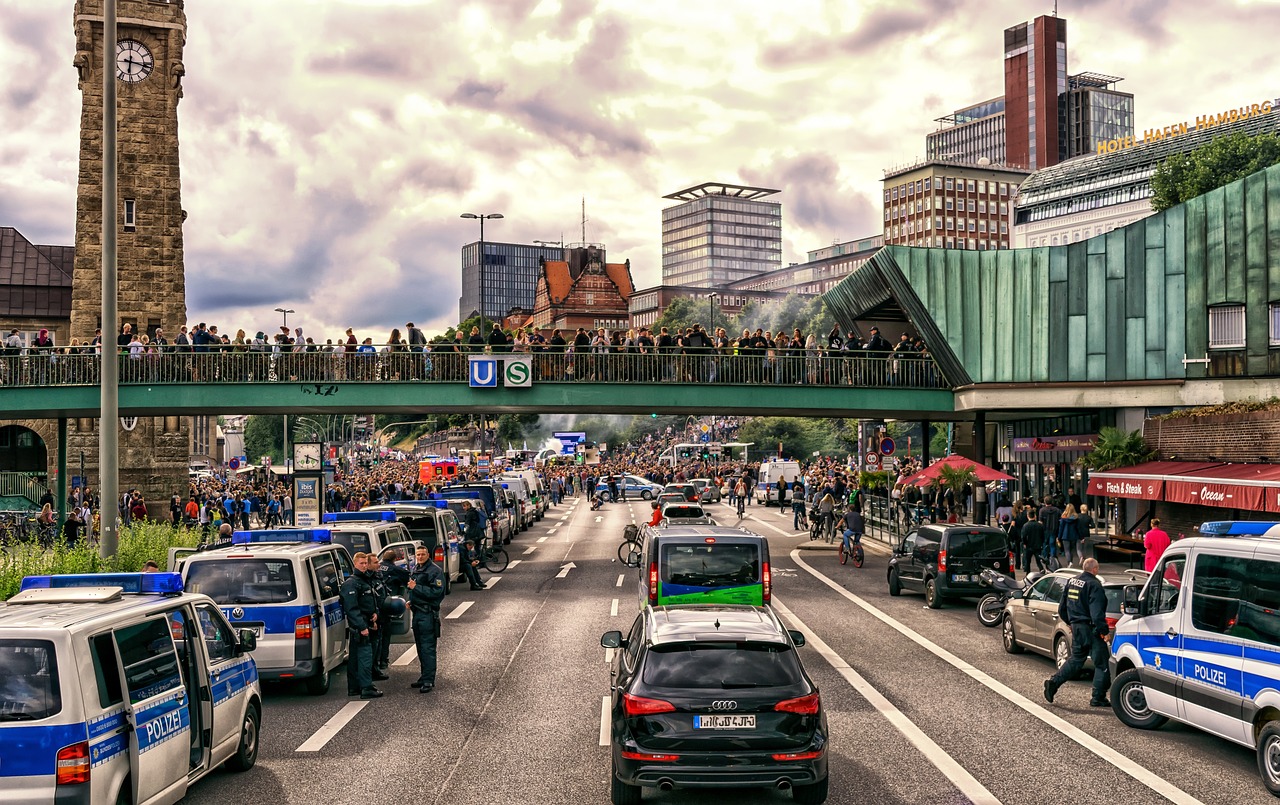
Establishing Check-in Protocols
When it comes to staying safe during civil unrest, establishing check-in protocols with your loved ones can be a game changer. Imagine a scenario where chaos reigns outside; the last thing you want is to worry about whether your family is safe. By having a structured plan, you can ensure that everyone is on the same page, reducing anxiety and enhancing safety. So, how do you go about creating these protocols?
First and foremost, it’s essential to establish regular check-in times. This could be as simple as a quick text or a phone call at agreed-upon intervals. For instance, you might decide to check in every couple of hours during unrest. This not only keeps everyone connected but also allows you to assess the situation and make informed decisions. Here’s a quick example of what a check-in schedule might look like:
| Time | Check-in Method | Person Responsible |
|---|---|---|
| 10:00 AM | Text | Parent 1 |
| 12:00 PM | Call | Parent 2 |
| 2:00 PM | Group Message | Child |
In addition to regular check-ins, it’s wise to designate a primary contact person. This person acts as the central point of communication for the family. In case of an emergency, everyone knows to reach out to this individual, streamlining information flow and reducing confusion. You might even consider using a messaging app that allows for group chats, so everyone can stay updated in real-time.
Another vital aspect of your check-in protocols is to establish emergency signals. These can be simple phrases or codes that indicate whether someone is safe or in need of help. For example, a message like “All clear” could mean everything is fine, while “Need backup” could signal distress. This way, even if communication is limited, you can still convey essential information quickly and effectively.
Lastly, don’t forget to review and practice these protocols regularly. Just like fire drills in schools, having a plan in place and practicing it makes it second nature when the time comes. Gather your family and run through the check-in process, discussing what each person should do in various scenarios. This preparation can make all the difference when it really counts.
- What should I do if I can't reach someone during a check-in?
If you can't reach someone, try alternative communication methods such as social media or email. If possible, check with other family members or friends who might have seen them.
- How often should we check in?
The frequency of check-ins can vary based on the situation. During heightened unrest, consider checking in every hour. In calmer situations, every few hours might suffice.
- What if I am in a different location from my family?
Establish a designated meeting point where everyone can gather if it becomes unsafe to stay in their current locations. This should be a place everyone knows well.
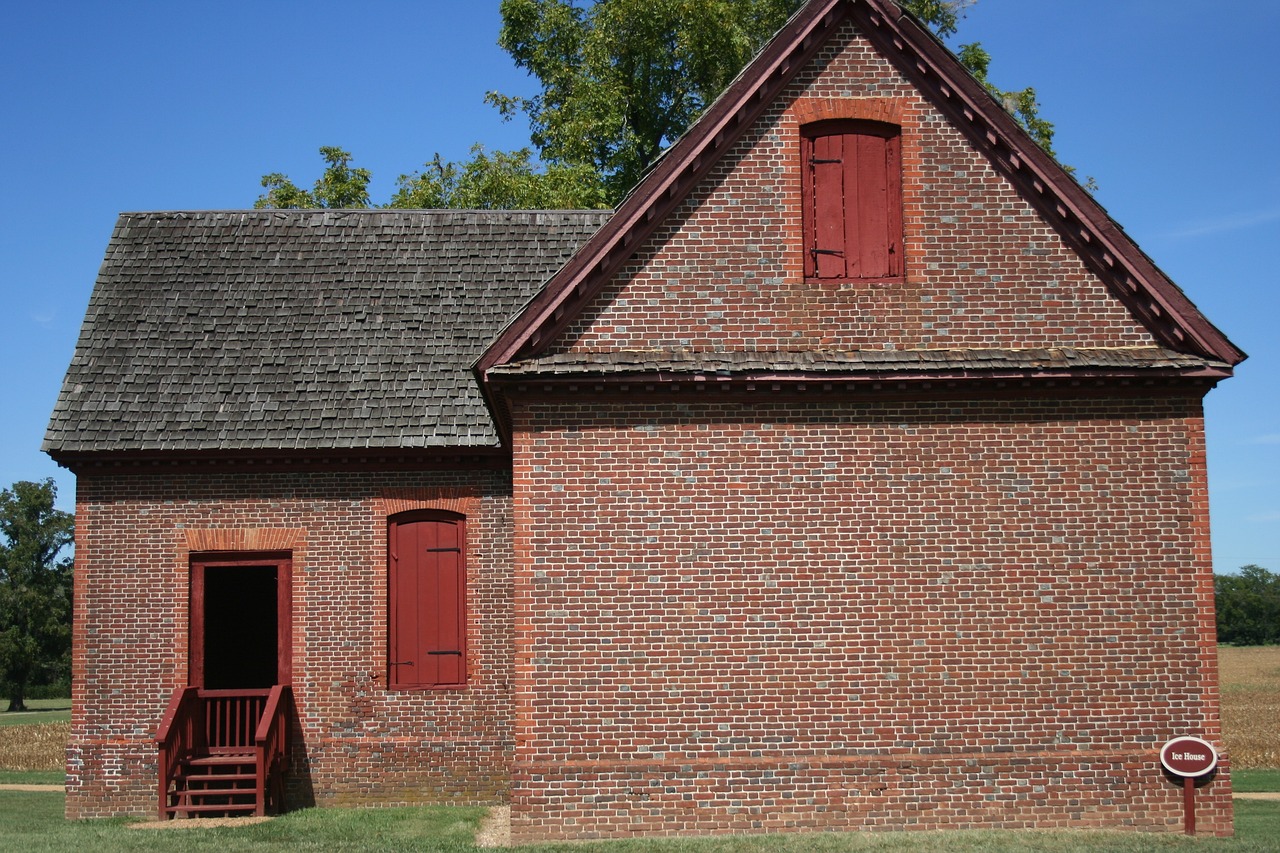
Using Technology Wisely
In today's digital age, technology can be both a lifeline and a potential risk during times of civil unrest. It's essential to leverage the tools at our disposal while remaining cautious about how we use them. For example, mobile apps can provide real-time updates about local events, but sharing sensitive information can expose you to unnecessary risks. So, how do you strike that perfect balance?
First and foremost, consider downloading trusted apps that specialize in emergency alerts and local news. These apps can keep you informed about the latest developments in your area, helping you make timely decisions. However, always ensure that these apps are from reliable sources—think of them as your digital watchdogs. You wouldn't want to rely on just any random app that might mislead you during a critical moment.
Moreover, utilizing messaging platforms can enhance communication with family and friends. Establishing group chats can help coordinate safety measures and share information quickly. Imagine being able to alert your loved ones about a sudden change in your plans or a shift in the situation around you. It's like having a virtual safety net. However, be prudent about the information you share. Avoid disclosing your exact location or any personal details that could be exploited by others.
Additionally, consider the importance of battery life during unrest. When tensions rise, access to charging stations may become limited. Therefore, invest in a portable charger and ensure your devices are fully charged before heading out. You might also want to familiarize yourself with offline maps. In case of network disruptions, having a physical map or an offline navigation app can be invaluable. It’s like having a compass in a storm—essential for finding your way when the usual routes are blocked.
Lastly, stay aware of your digital footprint. Social media can be a powerful tool for sharing information, but it can also attract unwanted attention. Be mindful of what you post, especially in times of unrest. It’s wise to keep your online interactions discreet. In this digital landscape, your safety often hinges on how well you navigate the balance between staying informed and protecting your personal information.
- What should I do if I receive a warning about civil unrest?
Stay calm and assess the situation. Follow your emergency plan, and avoid areas where unrest is reported. - How can I ensure my family stays safe during civil unrest?
Establish a communication plan and check-in regularly. Designate safe meeting points if you get separated. - What types of apps should I download for emergencies?
Look for local news apps, emergency alert systems, and trusted social media accounts for real-time updates. - Is it safe to post about civil unrest on social media?
Be cautious. Avoid sharing your location or sensitive information that could compromise your safety.
Frequently Asked Questions
- What should I include in my emergency kit for civil unrest?
It's crucial to have a well-stocked emergency kit ready. Include non-perishable food, bottled water, a flashlight with extra batteries, a first aid kit, and any necessary medications. These supplies can be lifesavers during unexpected situations, ensuring you have what you need to stay safe and healthy.
- How can I stay informed during civil unrest?
Staying informed is key! Follow reliable news outlets and trusted social media accounts for real-time updates about the situation. Additionally, consider signing up for community alert systems that provide emergency notifications. This way, you can make informed decisions and react promptly to any changes.
- What are the warning signs of civil unrest?
Recognizing early warning signs can help you avoid dangerous situations. Look out for large gatherings, escalating tensions, or unusual police activity in your area. Being aware of these indicators allows you to stay one step ahead and take necessary precautions to ensure your safety.
- How can I establish effective communication with my loved ones during unrest?
Setting up a regular check-in protocol is vital. Choose specific times to connect with family and friends, ensuring everyone knows they’re safe. Using mobile apps and messaging platforms can help maintain communication, but remember to be cautious about sharing sensitive information that might compromise your safety.
- What should I do if I find myself in a dangerous situation during civil unrest?
If you find yourself in a dangerous situation, stay calm and assess your surroundings. Look for safe spaces to retreat to, such as local shelters or trusted friends' homes. If possible, avoid confrontation and seek to exit the area quietly and quickly.



















